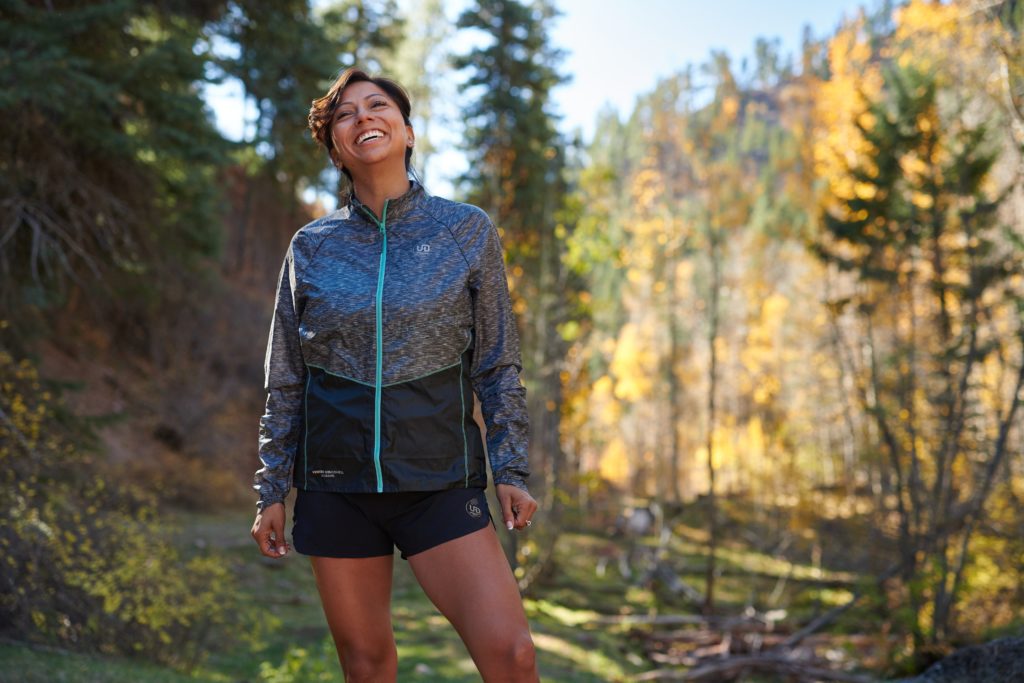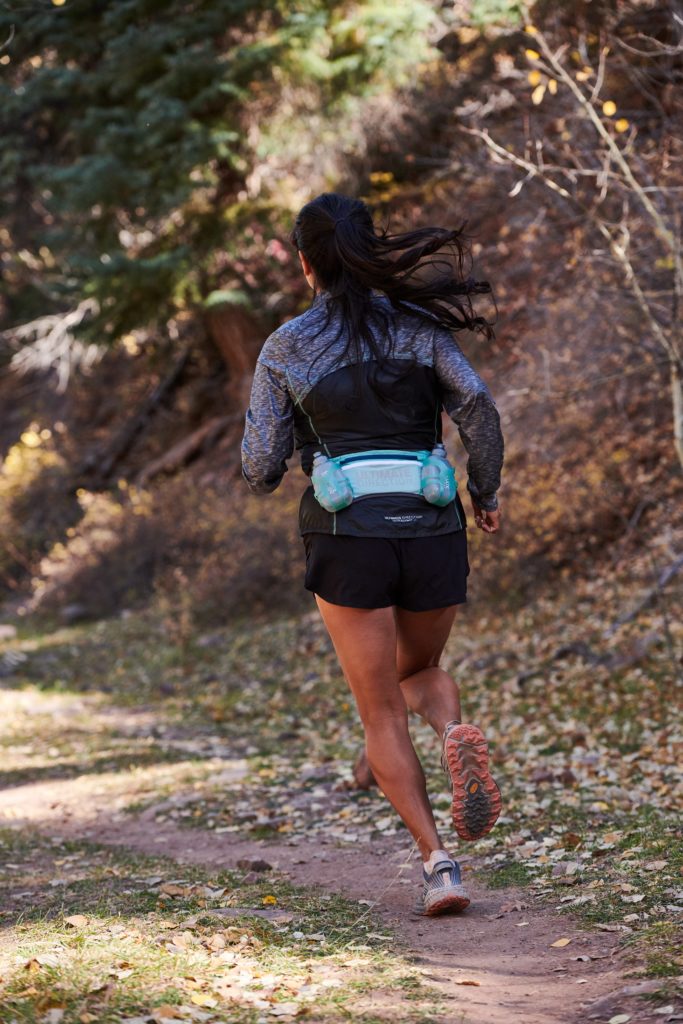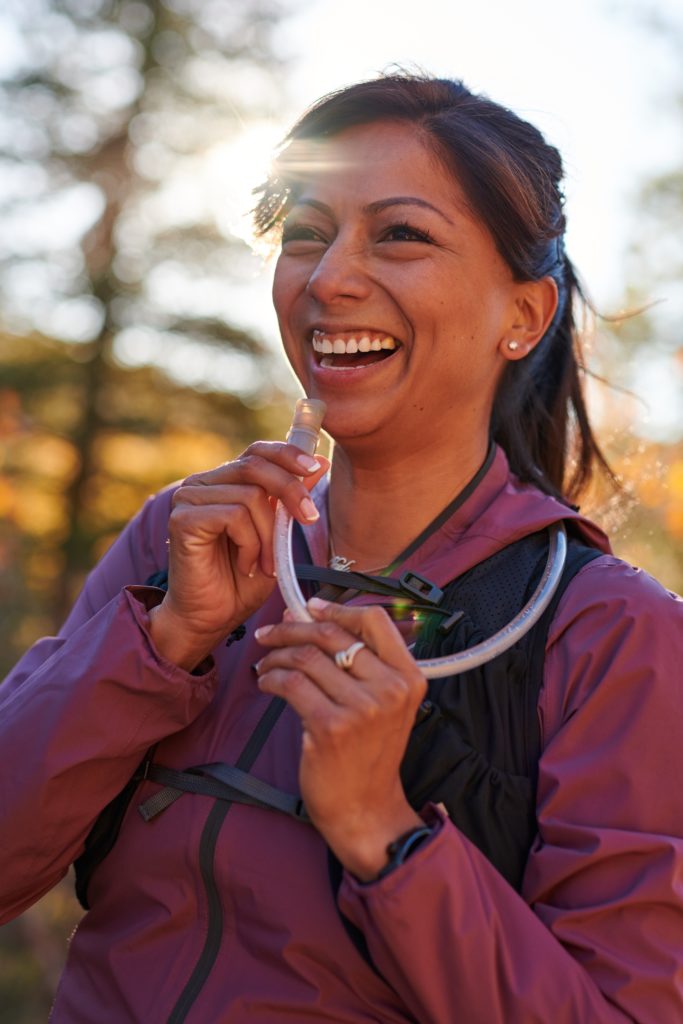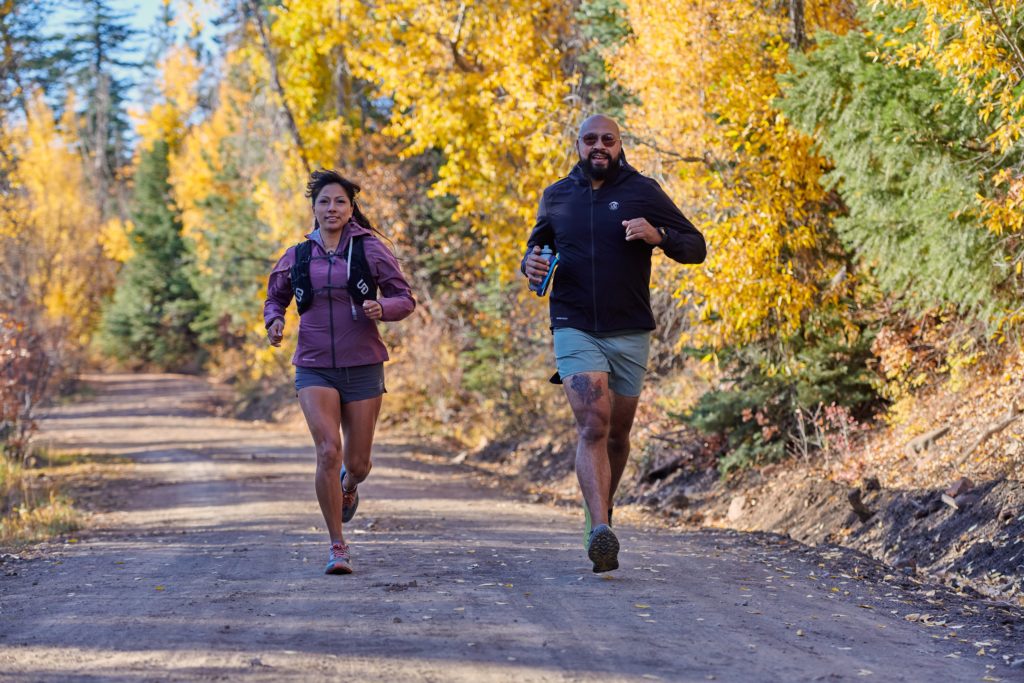By Ultimate Direction ambassador, Nadia Ruiz. Nadia is a personal coach, the the youngest Latina to finish 100 trail marathons, and has completed over 500 races around the globe.

Let’s face it – doing anything for the first time is a daunting task, especially taking on your first trail marathon. “How do I prepare, how do I ensure success, how do I overcome setbacks?” Mentors and coaches can provide a great resource to explore new paths, challenges, and careers. Therefore, I would like to share with you the 5 top tips I wish I knew before I began training for my first trail marathon to help you prepare and prevent injury.
1. Write down your goal and WHY
Setting a new goal is the first step. The next is reflecting within yourself to explore WHY is that your goal and why is it important to you. This is the most crucial aspect to pursing new goals because we all inevitably face setbacks, challenges, and days where we truly don’t want to get out of bed or the door. The “why” you come up with will be the force pulling you to your goal. Write it down and share it with individuals in your life that mean the most and will keep you accountable.
2. Choose a trail marathon race that makes you excited and/or scared
As human beings, we love things that give us thrills or create memorable experience. This is why getting married, having your first child, buying your first home mean so much, because it took so much to get there. Reaching your first trail marathon, trail race, or ultra means overcoming many obstacles that made you excited and scared at the same time. When we are scared with positive excitement, we tend to do what it takes to prepare and this encourages us to revisit our “why”. Find that place or race that makes your heart skip a beat.

3. Create a training plan that’s right for YOU
There are many ways to train for different races, distances, and challenges. The right coach can help create a plan for you. Let go of comparing how you are training or progressing in comparison to those online or social profiles of athletes that do it professionally. Your body and your lifestyle is unique to you; therefore, your training plan and approach is unique to you. Review your training history, your performance capability, and how much time you are willing to allocate to train for the goals you set for yourself. A qualified and experienced coach can do this for you, or with time, you can do it for yourself through trial and error to see what works for you. Hire a coach if you think it is the best fit for you.
4. Train specifically for your trail marathon race
Trail running throws in a few new challenges over road running: you are not only tackling the distance, speed, and weather, but also the terrain, altitude, and elevation gain. Within your training plan, ensure you are aiming to recreate your race conditions as much as possible within your training. If you know it will be hot, train in heat. If you know you will race at altitude, train higher up. If you you know you will race on technical terrain, get to the rockiest trails you can find. Racing is a celebration of our training. We all suffer on race day—how much we prepare and suffer in training determines how we allocate that suffering, whether it be more in our training or on our race day. We make the choice.

5. Stay committed
Any new goal takes commitment. Our biggest ally when tackling a large task is breaking it into smaller steps and aiming to accomplish a little more each day. Getting faster, getting stronger, and going longer are all alluring goals we would love to see ourselves accomplish. Remain committed to your goal, your “why”, accept your lifestyle, acknowledge your strengths / weaknesses, and forgive yourself when there is a day when you can’t get out there. Consistency will be your biggest ally in order to remain committed to the overall picture. Believe in your body, training plan, and above all your mind. It will get you to the start line and the finish line, even if it is in happy tears!

Nadia’s Top Gear Picks for Trail Marathon Training and Racing
Marathon Vest v2
For lighter, efficient training or racing. When you don’t need to carry so much, yet want the security to carry what you need.
Fastdraw 500
The most efficient gear to go in and out of aid stations for refilling. It has enough to carry your phone and/or snack, while you swiftly go from one check point to the next.
Ventro Windshell
Extra lightweight, breathable, and water-resistant for a packable piece that is great in all conditions